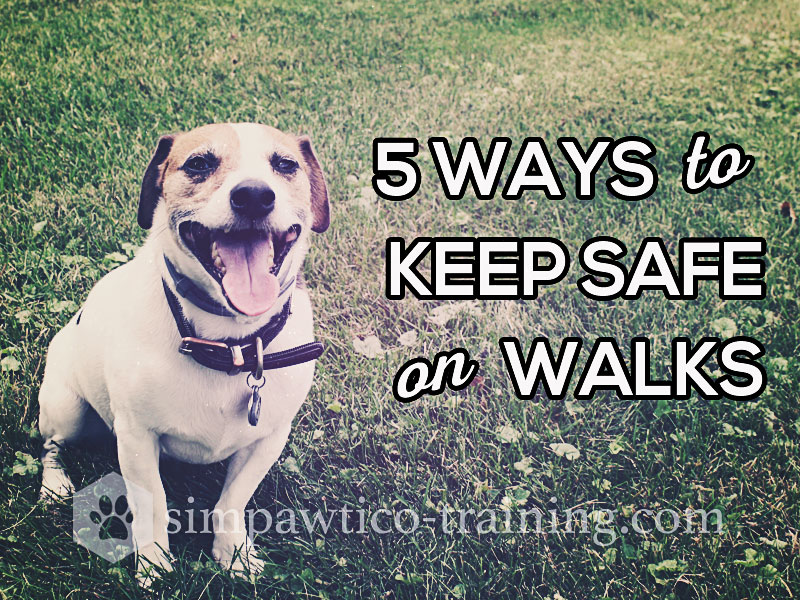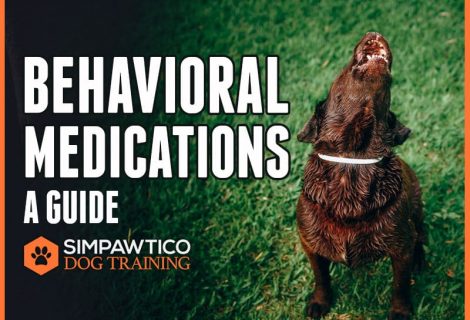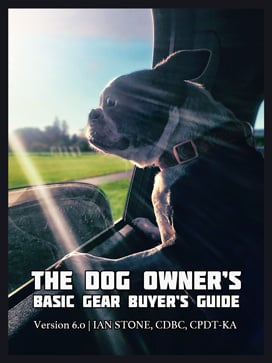Tips for walking a dog are plentiful online, and there are a lot of great trainers out there who can help you get that dialed in. But one thing about being out with your dog that I wish was discussed more is situational awareness. Well, we are going talk about that right now.
Situational awareness….now, that’s a mindset and skill most frequently taught in tactical training. Military and law enforcement organizations put a lot of time and effort into instruction and development in that area. There is a TON of material out there that goes into great detail. Even though we’re not stalking bad guys or taking a zodiac raft across a moonlit bay behind enemy lines, situational awareness is a really useful habit to cultivate no matter where you are or what you do:
- Driver’s Ed teaches situational awareness…they call it “Defensive Driving.”
- Athletes need situational awareness on the field, on the ice, on the court, or in the ring.
- Healthcare providers, executives, and organizations of all kinds encourage situational awareness to lower stress and increase performance.
- Workers in factories, warehouses, or on busy job sites must use good situational awareness to keep themselves safe.
- Scuba divers have to practice situational awareness watching depth, tank pressure, their environment, their dive buddy.
- In aviation, it’s a tremendously important skill that pilots use to process many complex and dynamic events happening simultaneously during a flight, and they use that information to guide their actions. There are vast quantities of sensor data available in the modern cockpit, and pilots have to be able to make sense of it and make decisions “on the fly” (get it? “ON THE FLY?” I kill me).
Look, it’s all about widening your attention span, learning to look, to communicate, and to understand the potential consequences of not paying attention. This why we teach children to look both ways before crossing the street. Those principles apply completely to being out in public with our dogs. Situational Awareness is the first, crucial step to good decision making.
Like I said, a lot has been written about situational awareness, and if you’re interested there are some introductory resources at the end of this post. There are lessons and classes out there to help you get that Jason Bourne level of hyper-awareness. And that’s cool if you want to do that. It’s a very interesting and useful discipline even if you’re not an assassin. However, I’m not suggesting it necessarily needs to be that extreme. Neither am I advocating a kind of paranoia by any means. In fact, mindfulness has been shown to lower stress and anxiety. I mean look: if you’re paying good attention you’re instantly much better at predicting and managing problems rather than trying to do damage control when you’re surprised.
The underlying theme here is Look – Think – Act. So, I’ve put together five EASY ways we can incorporate this mindset into excursions with our dogs:
# 1) Keep your head on a swivel.
When you’re out walking, stay cognizant of your surroundings. Look around. Look behind you now and then. Just keep your wits about you and know what’s going on around you by periodically scanning the environment.
# 2) Mind the space.
I’ve said it before, I’ll say it again: do not let your dog get away with something you wouldn’t let a toddler do. Move your dog out of the way of joggers and bicycles. Don’t let them just run up to anyone and everyone. Lock that bloody retractable leash in public places.
# 3) Resist focus lock.
Focus Lock describes our tendency to focus on one thing while all the other things around us fall away. This is why it’s illegal to text and drive in almost every state! Cell phones have become the single biggest focus lock in our lives today.
Besides cell phones, I see people all the time in pet friendly stores so engrossed in whatever they’re looking at in the aisle that they’re completely unaware that their dog is tearing apart a stuffed toy, or intimidating another dog, or wandering around a blind corner. It’s madness! Don’t allow yourself to get tunnel vision. Keep one eye on everything.
# 4) Beware normalcy bias.
Normalcy bias is a well-documented mental state people enter when facing a bad situation. It causes people to underestimate both the possibility of situations and the possible effects. People tend to assume that since something bad never has happened, it never will happen. It can result in the inability to cope and react when a situation does occur. Folks also tend to interpret warnings in the most optimistic way possible, seizing on any ambiguity to suggest a less serious situation.
Normalcy Bias manifests as the “Ahhh I’m sure it’ll be fine” attitude. Famous last words. Don’t be complacent, don’t be lazy. Don’t assume because your dog is friendly, that all dogs are friendly. Just because you’ve never encountered someone on a particular walking path, doesn’t mean you never will. Just because your last two dogs were easy to train, don’t assume your next one automatically will be and do nothing.
# 5) Educate Yourself on Dog Body Language.
Not every wagging tail means a happy dog; sometimes it means trouble. Not every curled lip with teeth showing means aggression; sometimes it means friendship (we call this a submissive grin). Use your developing awareness to watch your dog and figure out where they’re at in a given moment. Sometimes just giving them a minute away from everything to catch their breath makes all the difference. But you won’t know they’re getting stressed, if you’re not paying attention. Likewise, you can even get a better read on a strange dog, especially if THAT owner isn’t paying attention or suffers from normalcy bias.
When you can Look, Think and Act, you can avoid a ton of potentially sticky situations. Now, there is a lot of info out there on dog body language, so I will put a list of resources I recommend down below for you.
Does this seem a little overwhelming?
Here’s an easy step – one small move to get your started off on the right paw: look behind you every so often. Even just that one thing will make a tremendous difference. You can always build habits from there. Keep your wits about you, be aware of your surroundings and who’s in it, both human and canine, and keep your dog under your control. We can avoid a lot of silly mix ups if we just preemptively avoid trouble. And we do that, by paying attention.
Situational awareness is not an innate skill. Just like anything, it takes practice and repetition to cultivate the habit. But keep at it and you’ll save yourself, your dog, and other people a lot of trouble.
So what do you think guys? Do you have stories and anecdotes related to situational awareness and dogs? Do you have questions? Please start the discussion in the comments. If you learned something please subscribe to the blog and/or our YouTube channel. Again check below for resources and links about things we talked about. Until next time, keep learning, keep practicing, and I’ll see you soon. Cheers.
RESOURCES
Some of the links below are affiliate links. These won’t cost you anything, but the commissions we may earn through them help offset the cost of dog treats. Thanks for your support!
DOG BODY LANGUAGE
The Secret Language of Dogs by Victoria Stilwell
Very practical book. Victoria certainly doesn’t sugarcoat anything, but she’s a true dog lover for sure. A good start.
The Dog Body Language Phrasebook by Trevor Warner
I bought this book years ago and it’s still a go to book when I’m trying to show people what I’m talking about. Easy read with lots of great info I’ll bet you didn’t know.
Posters and downloads by Dr. Sophia Yin
Anything by Sophia Yin is going to be a) super accessible and easy to understand, and b) spot-on perfect.
Posters and downloads by Lili Chin
I love her work. I have one of her posters in my training facility to help people start to understand things a little clearer. Plus she has a Boston Terrier like me.
ACT Shelter Training DVDs
Back when I was training trainers, I used these videos to train them. They’re meant mainly for shelters and rescue workers, but anyone can learn from them.
SITUATIONAL AWARENESS
The Gift of Fear by Gavin de Becker
I had my wife read this one, actually. It’s so applicable to a million things in our lives today I recommend this book to everyone no matter who you are or what you do.
Left of Bang by Patrick Van Horne and Jason A. Riley
Now we’re getting into a little bit more specialized territory dealing with violence in our lives. Still an interesting and informative read. Don’t discount it because you’re suffering from Normalcy Bias!
Escaping the O Zone by Doug M. Cummings
Unbeatable Mind by Mark Divine
The CP Journal
The same folks who brought you Left of Bang, offering workshops on how to prevent violence and bad situations in your life.
Article on Imminent Threat Solutions
The ITS website definitely has some stuff geared towards military and law enforcement, but there’s a ton there for us civilians too. Lots of info and diagrams and exercises on outdoor skills, lifestyle, organization and productivity. It’s a pretty neat, robust blog. They’ve got a cool online store too.
Article on the Art of Manliness
Don’t let this blog’s title fool you. ANYONE can benefit from the articles on this blog. Lots and lots of practical, meaningful info. But yes, for men mainly. This article in particular is an interesting read.










Very nice post. I certainly appreciate this website.
Excellent info here, I am currently doing some research and found exactly what I was looking for. Thank you!
My pleasure, Carrie! Glad to help.